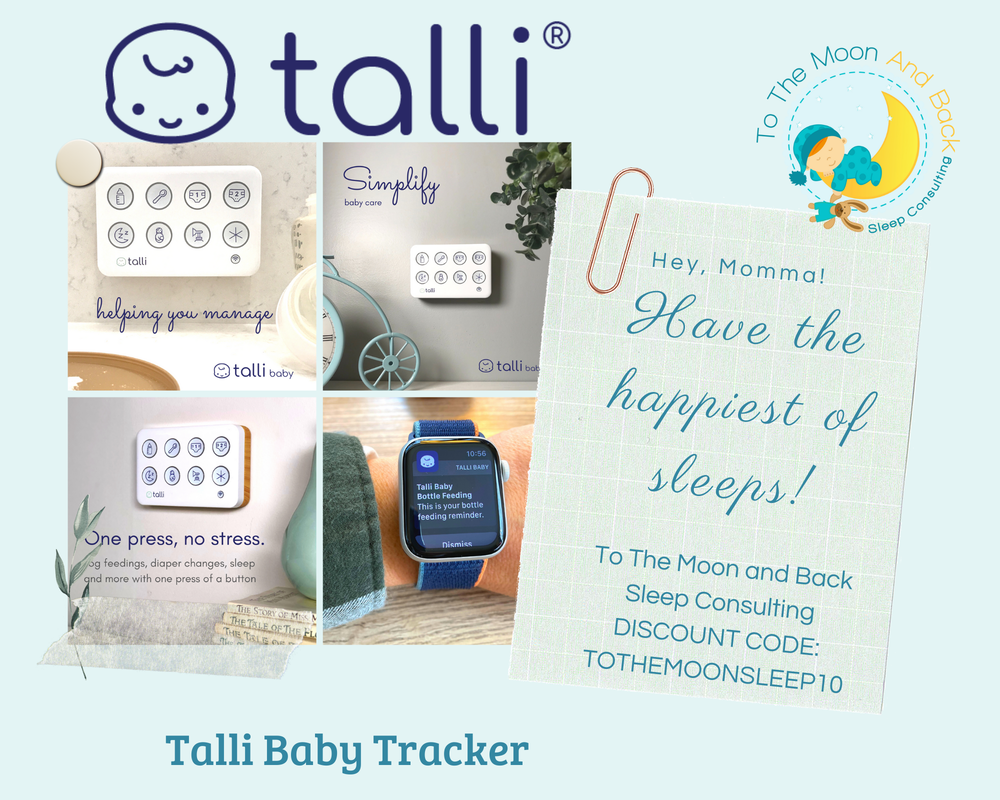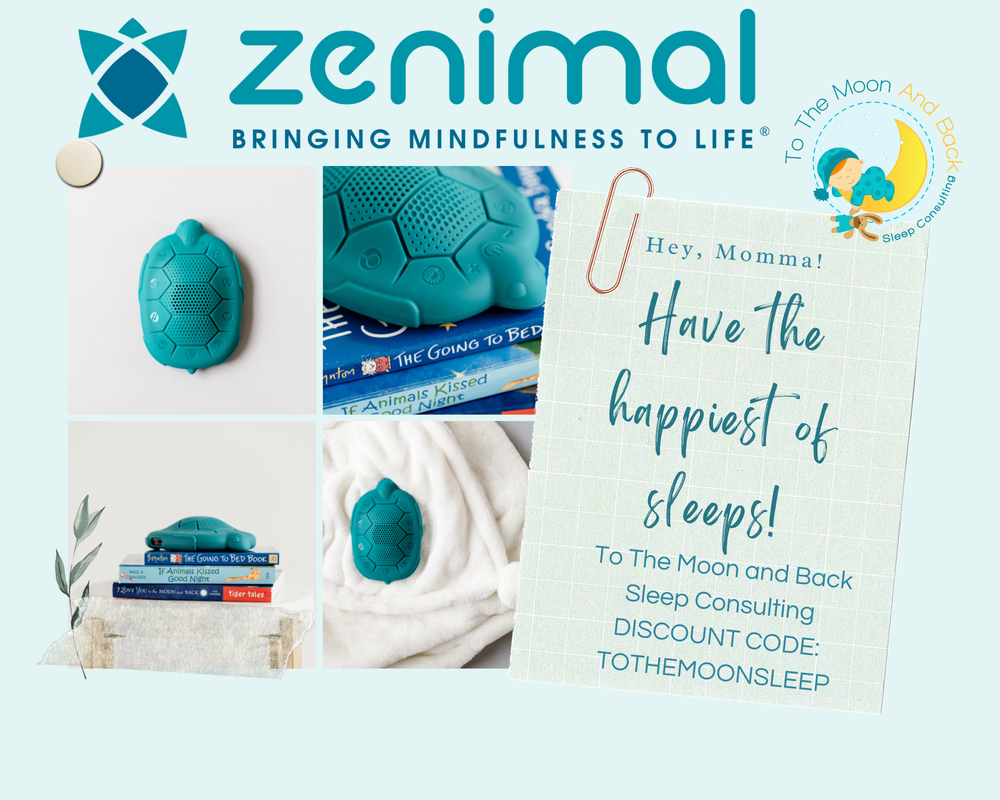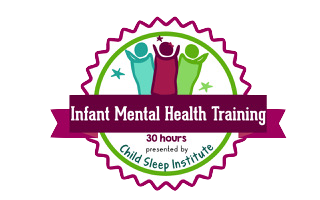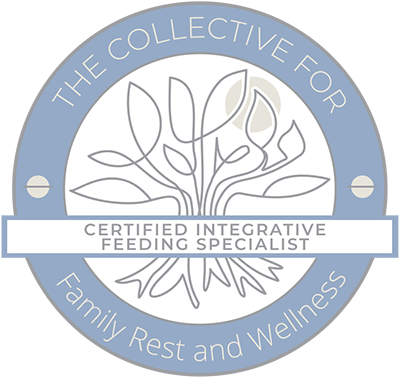|
Throughout the sleep training process, I'm often asked how to keep baby awake through their feeding during the bedtime routine. When you're working on sleep training, my number one rule is to keep your baby wide awake through any feeds. Nine times out of ten, the problem is that the bottle or breast has become a sleep prop. If you don't break the connection your baby has between the feed and sleep, the process will be so much more complicated. It can cause night wake-ups, and then when they wake up at night, they will still have the idea that they need a bottle or breast to get back to sleep at night. I suggest moving the feeding up in the bedtime routine. Most people have a feeding as the last step. That can be tricky, especially if they're not napping great yet. They could be tired by the time bedtime comes. By the time they've had a bath, and you've got jammies on, reading stories, and then you're going into a feed, they might be way too exhausted even to try to stay awake for the feed. Then you're fighting a battle of tickling and talking to them and trying to keep them awake, and they're so tired they really can't help you out. I suggest you move it up to before the bath. Have the feed, then the bath, jammies, stories, and then bed. That will help break any connection they have with the bottle related to sleep. If that feels a bit early in the routine, move it immediately after the bath. Sometimes, the tub stimulates children a little, so the feed can help calm them down. Most children really like their bath, so they'll be a bit more awake when you get to the feed. Then, you can move on to the next steps. The good news is that the better naps get, the less tired they'll be by bedtime, so that's something to look forward to. The more the separation between the bottle and sleep develops, the less likely they are to try to fall asleep at the bottle. You'll find that with time, even if they are exhausted, they won't use the feeding as a prop. There won't be a connection there anymore. Your baby will happily have their feed and then put themselves to sleep just fine when they get to the crib. AuthorErin Neri - Certified Pediatric Sleep Consultant and Owner of To The Moon and Back Sleep Consulting since 2016. Learn practical steps for sleep coaching during a move to ensure your children maintain healthy sleep routines throughout the transition. Relocating comes with various tasks and emotions, not least of which is the concern over how it will affect your family's sleep patterns. Sleep coaching during a move emerges as a critical element in navigating this transition smoothly. It's about more than boxes and new addresses; it's about ensuring the well-being of your children during a period of significant change. So, whether moving within the busy cities of Canada or to a quiet countryside, let's find out how to minimize the impact on your child's sleep and make the transition as seamless as possible for your entire family. Understanding the Impact of Moving on Sleep With its inherent disruption of daily routines and familiar surroundings, the act of moving poses a challenge to maintaining healthy sleep habits during relocation. The shift to a new environment can unsettle children, making the comforting consistency of bedtime routines more important than ever. This is about the physical aspects of where they sleep and the emotional security that routine provides. A child's sense of stability is closely tied to their sleeping environment and patterns. Thus, when families travel across Canada, the unfamiliarity of new bedrooms and the absence of their usual nighttime cues can lead to sleep disturbances. This makes maintaining healthy sleep habits during relocation into your moving plan not just beneficial but essential. Pre-Move Preparation for Sleep Consistency In the lead-up to a move, laying a solid foundation for your child’s sleep habits is indispensable. Sleep coaching during a move isn't just about the days surrounding the relocation but also about the weeks beforehand. Incorporating strategies for maintaining sleep consistency well in advance can significantly ease the transition. Here’s how to prepare:
Always keep in mind that preparing your family for a move involves more than just packing. By focusing on sleep coaching during this transitional phase, you’re setting the stage for a smoother adaptation to your new home. Maintaining Sleep Routines During the Move When embarking on a move across the country, the turmoil of the cross country move in Canada and hiring movers can easily disrupt your child’s established sleep routines. The key to minimizing this disruption is preparation and flexibility, ensuring that your child's sleep needs remain a top priority amid the chaos of packing boxes and travel plans. Choosing the right company can also play a role in maintaining sleep routines. A smooth moving process reduces stress for everyone, allowing parents to focus more on their children's needs during this time of change. Here are practical tips to help maintain sleep routines during the move:
Re-establishing Sleep Routines Post-Move Once you've arrived at your new home, take the time to set up your child’s sleep environment. This doesn’t just mean assembling the crib or bed but also ensuring the room feels safe and comfortable. Reintroduce established sleep routines as soon as possible, but be prepared for some adjustment time. Every child reacts differently to a new environment, and some may take longer to acclimate. If your child struggles more than expected, especially if your kids are experiencing night terrors, it's important to address these issues patiently and persistently. Revisit comforting bedtime routines and consider if additional support, such as from a pediatric sleep consultant, is needed. Tools and Resources for Sleep Coaching During a Move Several tools and apps are designed to support children's sleep routines, many of which can be especially helpful during a move. Technology offers practical solutions, from white noise apps that drown out unfamiliar sounds to sleep trackers that help parents monitor their child’s sleep patterns. Books and online forums provide additional support, offering insights from experts and other parents through similar transitions. On top of that, you can always reach out to professional sleep counselors with years of experience who can help ensure your entire family doesn't suffer from sleep deprivation before, during, or after this transition. Embrace New Beginnings with Restful Nights
Maintaining consistency in sleep coaching during a move is about more than just sticking to a schedule. More importantly, it's about providing stability and comfort in a time of change. So, as you prepare for your family's move to Canada, remember that the key to success lies in preparation, flexibility, and the understanding that each child's needs may differ. Whether adjusting to a new time zone or creating a sense of familiarity in a new home, the effort put into maintaining sleep routines pays off through restful nights and happier transitions. As we embrace new beginnings, let's ensure they're accompanied by the peaceful slumber our children deserve. Photos used: Pexels Pexels Pexels Pexels As a Certified Sleep Sense Consultant, I confess that I am unabashedly a sleep nerd. There’s something genuinely fascinating about the world of sleep – it’s like a vast, uncharted universe right inside our minds. Sleep isn’t just a nightly routine; it’s a journey into a mysterious part of our existence, a realm where the body and mind rejuvenate and engage in an intricate dance of restoration.
For many of us at Sleep Sense, our passion for sleep isn’t just professional; it’s personal. We’ve seen firsthand how a good night’s sleep can transform lives. In our experience, sleep is the closest thing to a panacea for life’s myriad challenges. It’s remarkable how many of life’s problems seem less daunting after a restful night. Imagine a tool so powerful it enhances your memory, boosts your creativity, strengthens your immune system, and even helps you maintain a healthy weight. That’s sleep for you! Sleep is not just about shutting down for the night; it’s an essential process that keeps our bodies and minds in optimum condition. To share our passion with you, here are 12 fascinating sleep facts that highlight just how incredible and bizarre the world of sleep can be: 1. Humans Spend 1/3 of Their Lives Sleeping: That’s a significant investment in time, indicating just how crucial sleep is to our overall health and well-being. 2. The Record for Longest Period Without Sleep: Randy Gardner holds this record, staying awake for 264 hours (about 11 days) in 1964, though it’s definitely not recommended to try this! 3. Dolphins Sleep with One Eye Open: They shut down half their brain and one eye while the other half remains alert, a behaviour known as unihemispheric slow-wave sleep. 4. Humans Are the Only Mammals That Willingly Delay Sleep: Other animals follow their natural sleep patterns unless they are interfered with. 5. Sleep Deprivation Can Be Torturous: It has been used as a form of torture as it can lead to severe psychological and physical impairments. 6. The “First Night Effect”: Many people don’t sleep as well in a new environment due to a survival mechanism where the brain stays more alert. 7. Snails Can Sleep for Three Years: They can enter a state of prolonged sleep to survive when the weather is not conducive. 8. The Shortest Sleeping Mammal: Giraffes only need about 1.9 hours of sleep daily, often in small naps of just a few minutes. 9. Cheese Can Affect Your Dreams: Some studies suggest that eating cheese before bed can influence the nature of your dreams, though the reasons remain unclear. 10. Pre-Industrial Sleep Patterns: Historical research suggests that before the Industrial Revolution and the advent of electric lighting, people used to have two distinct periods of sleep, known as “first” and “second” sleep, separated by a period of wakefulness during the night. 11. Exploding Head Syndrome: This rare, misunderstood condition causes individuals to experience loud, imagined noises (such as a bomb exploding, a gunshot, or a cymbal crash) as they are drifting off to sleep. It’s a type of sleep disorder known as parasomnia and is thought to be related to stress and fatigue. 12. The Role of the Full Moon in Sleep Patterns: Various studies have explored the impact of the lunar cycle on human sleep patterns, with some findings suggesting that people may experience poorer sleep quality during a full moon. This phenomenon, sometimes referred to as “lunar insomnia,” is thought to be rooted in ancient human rhythms that date back to a time when moonlight might have influenced our ancestors’ sleep-wake cycles and nocturnal activities. However, the scientific community is still debating the extent and consistency of the moon’s effect on sleep, as the evidence is inconclusive and varies between studies. As sleep consultants, our love for sleep extends beyond its mere mechanics. We are constantly in awe of its complexities and idiosyncrasies. We believe that embracing good sleep practices can profoundly impact every aspect of life, from health to happiness. Sleep well, live well – that’s our motto. May these fun facts inspire you to cherish and prioritize your sleep, just as we do every day. Sweet dreams! Before I get rolling here, let me say that I am not anti-pacifier. I mean, what mother could be? We’ve all been saved from a major baby meltdown by the quick introduction of a dummy into a baby’s mouth at the right moment. Maybe they missed their sleep window by a little bit and were getting a bit cranky; perhaps they got an unexpected bump on the head, or you had to swoop in and take the dog treat out of their mouth. Just before they go into a tantrum, in goes the pacifier, and like magic, all is well. Pacifiers have benefits beyond preventing tantrums, as well. The AAP found that pacifiers can reduce the risk of SIDS, possibly due to the fact that baby has a more challenging time burying their face into soft bedding if they have a pacifier sticking out of their mouth. So, given that very substantial and necessary consideration, I’m making the following recommendations based on the supposition that your baby is over a year old. That doesn’t mean this is irrelevant if your little one’s younger than that, but just make sure you’ve carefully considered the pros and cons of taking away the pacifier before you make a decision. So here’s the conundrum from a sleep expert’s point of view: pacifiers can become a problem when it comes to sleep. If a baby’s accustomed to falling asleep with a pacifier in, it almost always wakes up in the night after it’s fallen out. It kicks up a fuss until mom gets up, finds it, and pops it back in its mouth. So, first off, let’s look at why babies can’t just fall asleep with a pacifier in and then peacefully sleep through the night. Then, we can look at some strategies for getting rid of the pacifier if you and your baby are ready to take the plunge. Sleep, for babies and adults alike, comes in cycles. Many of us are under the assumption that we fall asleep at the start of the night, go into a deeper sleep as the night goes on, and then gradually come out of it as the morning rolls around. It’s true that we go from light sleep to deep sleep and then back again, but it happens several times a night, depending on how long you sleep. For adults, a full cycle typically takes between 90 and 120 minutes. For a baby, it’s closer to 50. Suppose your baby won’t sleep at bedtime without a pacifier in their mouth. In that case, there’s a distinct possibility that they rely on that pacifier to sleep. When they get to the end of a sleep cycle, they get into that very light stage of sleep and might actually wake up, at which point they’re still tired, but they might have trouble getting back to sleep because “Hey! Where’s the pacifier? I can’t get to sleep without my pacifier!” Suppose they can’t find it or haven’t figured out how to put it in on their own yet. In that case, they’re going to get upset because they can’t get back to sleep, and they’re going to start crying for someone to come and rectify the situation. And that, right there, is the definition of what we in the sleep consulting field call a “sleep prop.” Sometimes, it’s feeding, sometimes it’s rocking, and sometimes it’s some crazy combination of a bunch of things, but essentially, it’s something that babies depend on to get to sleep that they can’t provide on their own when they wake up in the night. More than anything, that’s the secret to sleeping through the night. Getting rid of sleep props is, hands down, the most critical component to getting your little one sleeping peacefully from the time you put them to bed until they wake up, happy and refreshed, in the morning. So, if you’re reading this and thinking, “That’s IT! That’s exactly what’s happening with my baby!” you’ll probably want to take steps to get rid of that pacifier. I have a few tips to get you through the process quickly and peacefully. When it comes to breaking bad habits, I’m a cold turkey advocate, and this situation is no different. Toddlers do better with absolutes than with moderation, so my advice to parents is almost always to pick a day to make the change, explain it to your little one, and then toss all the pacifiers into the trash. Toddlers can often adjust to new situations remarkably easily so long as things are clear and consistent. So don’t save one for emergencies or just-in-case scenarios. It will be too easy for you to fall back on the pacifier to get a quick solution if your baby is having trouble sleeping. Then you’ll just be causing confusion. Alright, you’ve made the decision, explained the situation to your toddler, and signed a mental contract with yourself that you’re not going to do it by half measures. You’re ready to go all in. What’s next? Now’s the time to flex those creative muscles and devise a plan. How are you going to spin this change in a positive way? Toddlers typically embrace the idea of growing into “big kids,” so marking it as a milestone can be a big help. Make sure to present the change as a very exciting and joyous occasion. This is a bit of a dirty parenting trick. Still, you could round this off by introducing a “Pacifier Fairy,’ by telling your toddler that the Pacifier Fairy is coming to collect all of their dummies and, in exchange, will leave them a special surprise. Whether that’s something your little one will embrace, I leave it up to your discretion.  One quick side note here: I’ve seen a lot of situations where parents with a toddler and a newborn or younger sibling in the house will give the older baby’s pacifiers to the younger one. On its face, this seems like a good idea, but it can breed some resentment from your toddler when they see their younger sibling sucking on their pacifier. If you can, get rid of your toddler’s pacifiers and get different ones for the younger child. So, you’ve laid the groundwork, your little one has grasped what’s going on, and the house is now pacifier-free. Now, you’ll want to brace yourself because, in about 99% of all cases, your toddler will go a little bit bananas while they adjust to the new reality. It’s nothing to be concerned about; we all get a little irritable when we break a habit, but I want you to know that it’s rarely a seamless transition. There’s going to be some pushback. When that pushback hits, and your toddler starts to lose it a little, my advice is to distract, distract, distract. Keep some of their favourite treats on standby, have the iPad cartoons ready, and quickly turn their attention to something else when they start to fuss about the lack of a pacifier. You can acknowledge their frustration and offer them as much comfort and support as needed but don’t apologize or give in. Remember that you’re the authority figure here. If you’ve decided that the pacifier is a thing of the past, that’s the way it is. Giving them a pacifier at this stage is only going to reinforce the idea that crying or fussing is an effective tool for getting their way. Every toddler is obviously a unique individual, so use these guidelines in conjunction with your intuition. Within a few nights, maybe a week, your little one should be Binky-free, and your whole family should enjoy the benefits of those glorious, sleep-filled nights. AuthorErin Neri - Certified Pediatric Sleep Consultant and Owner of To The Moon and Back Sleep Consulting since 2016.  As a Certified Child Sleep Consultant, one of the most distressing concerns I encounter from parents involves night terrors. Understanding what night terrors are and how to handle them can be a beacon of hope amid nighttime turmoil. This guide aims to shed light on this sleep disorder, providing insights and strategies to help parents and children navigate these dark moments. What Are Night Terrors? Night terrors, also known as sleep terrors, occur during the non-REM (Rapid Eye Movement) stage of sleep, typically within the first few hours after a child falls asleep. Unlike nightmares, which happen during REM sleep and can often be recalled, night terrors are characterized by intense fear, screaming, sweating, confusion, and even sleepwalking, with little to no recollection of the event the following morning. These episodes can last from a few minutes up to 30 minutes and are more common in children aged 3 to 12 years old. It's important to note that night terrors are a part of a child's development and usually aren't a sign of a deeper psychological issue. Causes of Night Terrors The exact cause of night terrors is poorly understood, but they're thought to be related to over-arousal of the central nervous system during sleep. Several factors can increase the likelihood of night terrors, including:
What Can Parents Do? While night terrors can be alarming, there are several strategies parents can employ to help manage and reduce the frequency of these episodes:
Night terrors can be a frightening experience for parents. However, with understanding, patience, and the implementation of strategies to promote healthy sleep habits, most children outgrow night terrors with time. Remember, you're not alone; support is available to guide you through these challenging nights. AuthorErin Neri - Certified Pediatric Sleep Consultant and Owner of To The Moon and Back Sleep Consulting since 2016. If you’re reading this, you likely have a little one who’s been falling asleep in an awkward position. You may have heard that it can be an issue and are looking to learn how to deal with it ahead of time. You may also be oddly interested in the most random blog post topics you can find online. Either way, I will do my best to ensure you walk away from this post feeling like you got some serious value out of it. So your baby has learned to stand up! Congratulations on this wonderful milestone! It’s such an exciting time to be a parent, and this is such a massive step into the world of development that’s coming your way very soon. Many babies have issues when they first learn to stand up; they haven’t learned to get back down yet. During the day, this doesn’t present much of an issue. Your little one can spend all day practicing going from standing to seated while you’re next to them and helping them through it. But once nighttime rolls around, this becomes a whole other issue. I know the Catch-22 this puts parents in, believe me. On the one hand, you can’t just leave your baby in a situation where they might fall down and hurt themselves, but on the other, if you keep going in and laying them down, they don’t learn how to do it themselves. Moreover, they’ll quickly learn that standing up and making a fuss is a pretty effective way to get mom or dad back into their room and pay attention to them. So there’s a fine line that we need to walk to help baby figure out how to solve this little situation they find themselves in without creating a bad habit that could sabotage their sleep. If your baby hasn’t started this behaviour yet, let me warn you: It’s frustrating—more so than the average middle-of-the-night wake-up—because the solution is so totally obvious. You’ll likely find yourself saying, “Just lie down, already!” more than a few times before this gets resolved. As with all parenting, patience is essential. Keep in mind that your baby may not know how to go from a standing position to a sitting one on their own yet, and they may not realize that sleep comes a whole lot easier when you lie down. Remind yourself of this when they wake you up for the fifth or sixth time in three hours because they’ve woken up and gotten back on their feet again, fussing because they can’t get back to sleep. The quickest way through the first part of the equation is to develop that standing-to-sitting skill, so during the day, practice going from standing to sitting whenever you can. When a baby pulls herself up to a standing position, try putting their favourite toy or stuffie on the ground nearby. Gently encourage them to go from a standing position back down to ground level to get their reward. Once they’ve mastered that skill, however, that second hurdle may still be an issue. They may not realize that sleep is much easier to achieve when lying down. It seems like it should be instinctive, but many things seem that way when you’ve been doing them all your life. When you’ve only been around for nine or ten months, it might not seem so intuitive, so again, patience, mama! We don’t want to create a situation where baby starts relying on you to do the work for her, so avoid repeatedly laying her down when she stands up in the crib. Do it a few times at first to show her what’s expected, but switch to a more suggestive approach that doesn’t involve contact once that’s established. Pat the mattress and use a key phrase, like, “Lay your head down” or “Come lie down, baby,” before too long, they should start to connect the dots and realize that lying down is the best way to get to sleep. Remember, even though it might appear that your little one is fighting sleep sometimes, that’s rarely the case. They want to sleep, but they lack the skills necessary to get there on their own, so help them figure it out without doing the work for them. They’ll take care of the rest as soon as they develop a little confidence and ability. And one last little tip before I leave you! Hats off to all of the single parents out there and the fantastic work they do, but if you’re raising baby with a partner, talk this out with them and come up with a plan that both of you can agree on and follow through with. One parent responding with one set of expectations while another responding totally differently will confuse the baby even further in a situation where they’ve already got a lot to figure out. You will need to respond in the same way for your expectations to be clear, and you’ll see results much quicker if you’re working from the same playbook. As always, be calm, be patient, and be consistent. The hard work now will pay off a thousand times when your little one sleeps soundly through the night and happily goes down for naps during the day. AuthorErin Neri - Certified Pediatric Sleep Consultant and Owner of To The Moon and Back Sleep Consulting since 2016. I don’t know if I’m biased, but seeing a sleeping baby is the most peaceful, comforting image I can imagine. The sheer peacefulness, the softness of those fluffy pyjamas, the way they hold their arms by their sides, the nearly inaudible sound of their breath, the perfect stillness of it all, looks like the very definition of “rest.” Or at least that’s what it looks like in the pictures. But suppose your little one has started rolling over and learned how to navigate their crib a little. In that case, you may have noticed that they tend to get themselves into some laughably uncomfortable-looking positions. Seriously, babies can get themselves into sleeping positions that would make a contortionist gasp in horror, and they don’t just do it to shock and amaze an audience. They literally sleep like that! Even though it can occasionally be good for a laugh, it can also be pretty concerning from a safety standpoint. Suppose it’s the middle of the night. You’re checking the baby monitor to see that your little one has somehow managed to fall asleep while propped up on their toes and forehead for the third time in under an hour. In that case, it can be really frustrating as well. Now, one of the cornerstones for getting little ones to sleep through the night involves teaching them independent sleep skills. One of the most common questions I get asked is, “What am I supposed to do when my baby looks uncomfortable?” Parents don’t want to wake their baby up by moving them back to the middle of the crib and repositioning them. So they look like they’re more comfortable, but they also don’t want to leave them bunched up in the corner of the crib, looking like they’ve tied themselves in a knot. As with all things parenting-related, the answer isn’t a simple yes or no, but I’m happy to tell you that it’s as close as you’re likely to find in the parenting world. To quote an old saying, “Sometimes you’ve just got to do what you’ve got to do,” and when it comes to safety, everything else has to be shuffled down in the list of priorities. So if, for example, your baby has learned how to roll from back to front but hasn’t yet mastered the whole front-to-back thing, then I’m sorry to say you’re going to have to keep an eye on the baby monitor, go in every time they flip themselves over, and flip them over onto their back. Every. Single. Time. At least until they’ve figured out how to flip over independently. Will that delay their ability to develop independent sleep skills? Will they wake up cranky and fussy before going back to sleep? Well, yes, probably, but if a baby is face down on the mattress and can’t flip themselves over, you’ve got to intervene, no matter the fallout. The good news is that this is usually a short-term issue. Babies learn how to roll from front to back pretty quickly after learning the back-to-front maneuver, so you don’t need to worry about months of late-night adjustments. Spend some time during the day practicing the rollover, and you should see them get the hang of it within a week or two. Now, suppose baby’s gotten themselves into a position where they have a limb sticking out of the crib that could get stuck or twisted when they try to move. In that case, you’ll just have to bite the bullet and get them squared away. Do it quickly and quietly, and try to engage with them as little as possible. Note that most cribs nowadays don’t have much potential for this kind of occurrence. They’ve moved the slats closer to each other so that little limbs can’t get through the gaps, but if something like this does happen, fix it quickly and leave the room. Now, let’s say your baby has learned to flip from front to back, doesn’t have a limb at risk of injury, but has pushed themselves up against the side of their crib and looks really uncomfortable. Should you still get in there and move them back to the middle? In this case, probably not. Babies find comfort in pretty awkward-looking positions. As long as their airway isn’t obstructed (i.e., head tilted forward, nose and mouth in contact with the mattress), it’s probably best to just let them sleep. I know it can be a little concerning to see them with their knees practically tucked under their chin, but if they’re uncomfortable, they’ll most likely wake up and rearrange themselves. There’s not usually a need for a parent to reposition them. Remember, safety first, always! But talk to your pediatrician about safe sleep positions and make informed decisions about when you should and shouldn’t move them around in their crib. More often than not, if they’re sleeping peacefully, they’re doing just fine, no matter how goofy they might look. One final note: Avoid letting babies of any age sleep in a “positioner” or “nest.” Many of them can force the baby’s head to tilt forward, and others have soft, plushy sides, both of which can obstruct breathing. The FDA has issued a warning against all manner of these products. Despite their claims, they increase, not reduce, the likelihood of SIDS. AuthorErin Neri - Certified Pediatric Sleep Consultant and Owner of To The Moon and Back Sleep Consulting since 2016. Daylight savings starts each spring season and this year is shows up on Sunday, March 10, 2024.
When it's time to “spring forward” the clocks it can be a dreaded time for parents of young children because with this, comes an adjustment that does not happen immediately. This is because children tend to be more structured in their bedtime and wake up around the same time each morning and that is why people usually can see a greater effect on children when the time changes. However, there are some things you can do to help make the transition to the new time go a little smoother. My recommendation is to leave your clock alone Saturday night. Wake up Sunday morning, have breakfast, then go around your house and change your clocks. Psychologically, it will feel much better for everyone if you wait until Sunday morning to change the time. My best advice for children to help them with the change is to split the difference with the old time and the new time. How does that work? “What are you looking forward to?” This is usually one of the first questions I ask parents when I partner with them. It helps them visualize what life will be like in just a couple of weeks when their baby sleeps soundly through the night and takes long, rejuvenating naps. For most parents, the answer is right there in the question. They just want their baby to get the sleep they need to be happy and healthy, and obviously, they want the same for themselves. But once they’ve moved past the first few blissful mornings when they wake up and realize that their baby has slept through the night and is still sleeping, they start to discover that a well-rested baby brings some unexpected benefits. The number one among them is the ability to leave the baby overnight with the grandparents. There’s something absolutely magical about sleepovers. Spending the night somewhere outside of your home has a very intimate quality to it. Whether you’re a young kid spending the night at a friend’s house, the first time you and your partner sleep in the same bed, or the first time you stay in a hotel on your own, sleeping somewhere forges an emotional connection, and for grandparents, having their grandchild sleep in their home is beyond special. It’s a reminder of their days as new parents, a living, breathing testament to the family they’ve built together, and a chance to wrap themselves up in all that family love that’s so saturating when there’s a baby in the house. For mom and dad, this is an opportunity to go out on a well-deserved date night! Most parents I work with haven’t enjoyed that luxury since the day they brought their baby home from the hospital, whether 3 months ago or 3 years ago. Hence, taking advantage of a reliable, enthusiastic (and usually free!) overnight babysitter allows them to reconnect in a way they haven’t enjoyed for far too long. OK, putting the sentiment aside for now, there is some groundwork to be done before you drop your little one off at your parents’ place. You’ve completed stage one, coach your baby, so now it’s time for stage two. Coach your parents. Now, obviously, some grandparents will be completely awesome, wonderful, and fully compliant with whatever you tell them to do vis-a-vis their grandchild. But not all of them. Some grandparents have very, shall we say, entrenched views on parenting. After all, you’re living proof of their expertise and experience. It can be a bit of a balancing act to insist that your parents respect your little one’s schedule and sleeping arrangements while still respecting their role as experienced and incredible caregivers. So today, I’d like to give you a few tips on how to do exactly that so your whole family, including those beloved members outside of your home, can benefit. 1. Respect Your Elders Above all, remember that these are not rookies. They’re seasoned veterans who have been through everything you’re going through now, so even though you may need to establish some ground rules, don’t approach it the same way you would a teenage babysitter. Demonstrating confidence in their abilities will help ensure that whatever rules you do lay down, they’ll be adhered to. 2. Be Authentic I see so many parents trying to play parenthood off as if they’ve got everything under control at all times, even with their own parents. I mean, if anyone knows how tough raising a child is, it’s grandparents, so don’t be shy to let them know how difficult it was to function when your baby was waking up every hour at night and how hard you’ve worked to remedy the situation. Understanding the emotional investment you’ve put into solving your little one’s sleep issues will help them feel a personal commitment to the routine. 3. Explain the Incentives Grandparents crave interaction with their grandkids. I mean, they absolutely crave it. They’re like baby-interaction vampires. Not that anyone can blame them, of course. Smiles and giggles and burps from a baby are wonderful to anyone, but to that baby’s grandparents, they’re positively life-affirming. As such, they tend to want to keep the baby awake longer than recommended. (This is especially true in the case of newborns, who can typically only handle about 45 minutes to 1 hour of awake time before they need to go back down for a nap.
4. Share Your Experience Suppose you’ve already got your baby sleeping well at night and napping well during the day. In that case, you know what a difference it makes to their personality. Personally, I could not believe the improvement in my baby’s mood once we had gotten the whole sleep situation figured out. Parenting was exponentially more enjoyable when my little one was basically always in a good mood. It may sound crazy, but I just liked being around my baby so much more.
5. Equate Sleeping With Feeding If there’s one thing a grandmother won’t abide, it’s a hungry baby. The average grandmother won’t accept a hungry anything, come to think of it. But when it comes to babies, they’ll move heaven and earth to make sure that little ones are adequately fed. Putting sleep on par with feeding priority-wise can help ensure that the same level of dedication gets devoted to getting baby down for naps and into bed on time. So when you’re going over the babysitting guidelines, try to avoid getting into the minutiae and stressing how important those two things are when they’re taking care of their grandchild. One last thing I’d like to mention here because I think it’s super important: there’s a good chance your parents might end up being guilty of a wee bit of sabotage. For example, if a baby wakes up at night and cries, they might respond immediately and feed them back to sleep. Or they might allow your toddler to sleep in their bed with them. They may hold them and rock them to sleep at bedtime. That can cause some severe anxiety for a parent who’s invested a whole lot of time, effort, and emotional capital into breaking those sleep associations. However, I want to reassure you that there’s typically no need to panic and call off any future sleepovers. Babies, even newborns, are surprisingly adept at recognizing different sleeping environments and understanding the rules in them, so just because they get rocked to sleep at grandma’s place doesn’t mean they’ll revert back to that expectation when you get them home. If they’ve developed some strong independent sleep skills, they’ll be back to normal pretty much immediately. So don’t lose your mind if your mom tells you she let baby fall asleep on her chest. A gentle suggestion that she not do it all the time, combined with the concession that you know how hard it is to resist a baby falling asleep on you, should be all that’s needed. AuthorErin Neri - Certified Pediatric Sleep Consultant and Owner of To The Moon and Back Sleep Consulting since 2016. |
To The Moon and Back Sleep ConsultingProviding families the tools & support they need to get their little ones sleeping through the night and napping like champs! Everyone has more fun when they are well rested! Visit Wollino - Discount Code: TOTHEMOONANDBACK10
Browse
All
|
All information provided on this website, including texts, images, and other materials, are for informational purposes only and should not be considered a replacement for assessment or treatment by a healthcare provider.
© COPYRIGHT 2016-2024 TO THE MOON AND BACK SLEEP CONSULTING. ALL RIGHTS RESERVED. WAKING GIRL WEB DESIGN
© COPYRIGHT 2016-2024 TO THE MOON AND BACK SLEEP CONSULTING. ALL RIGHTS RESERVED. WAKING GIRL WEB DESIGN

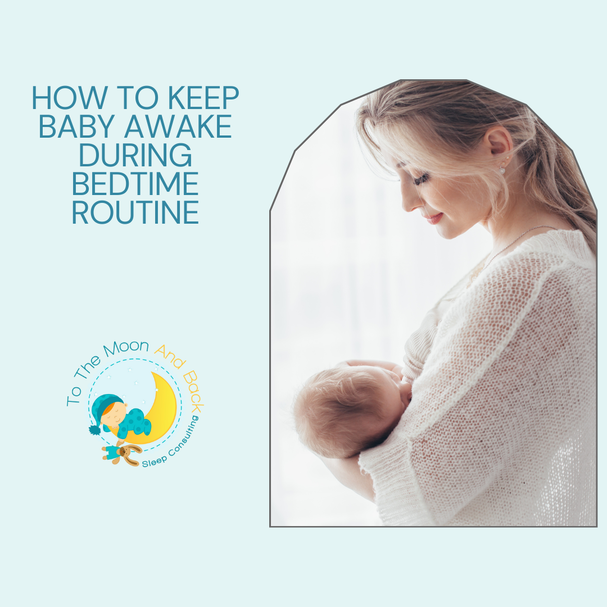






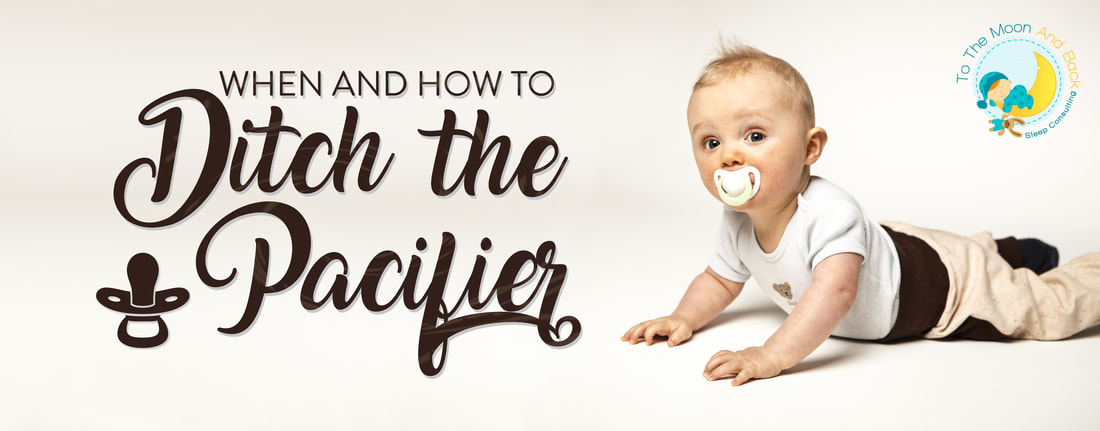
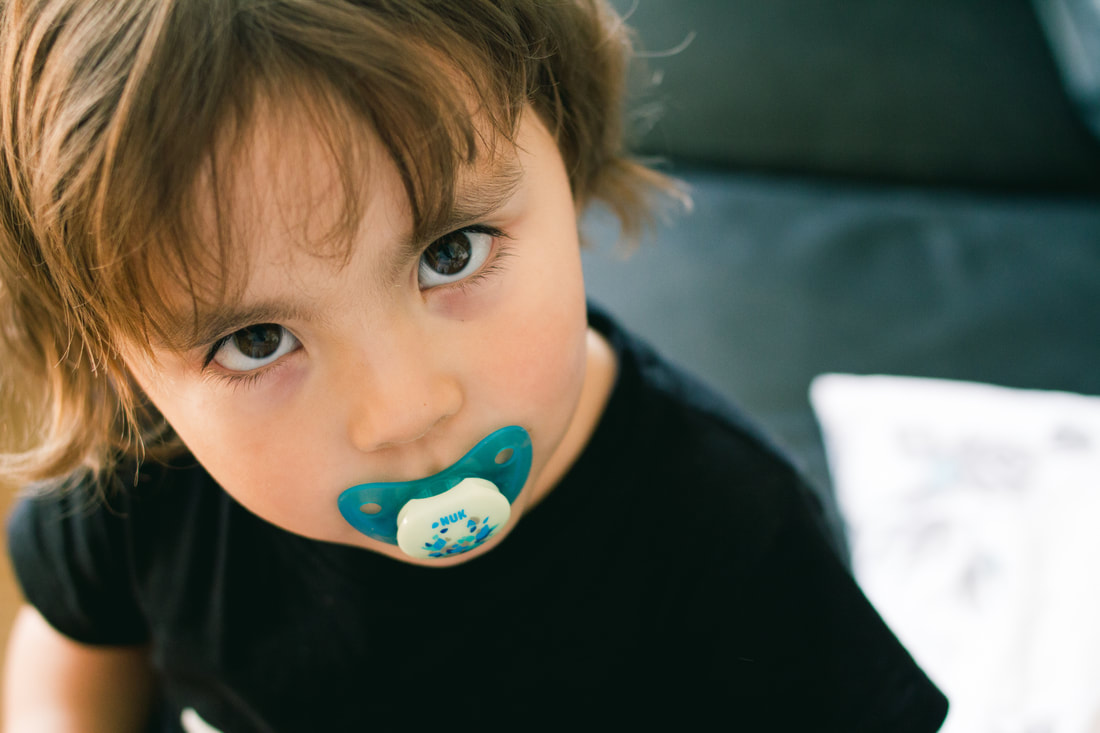
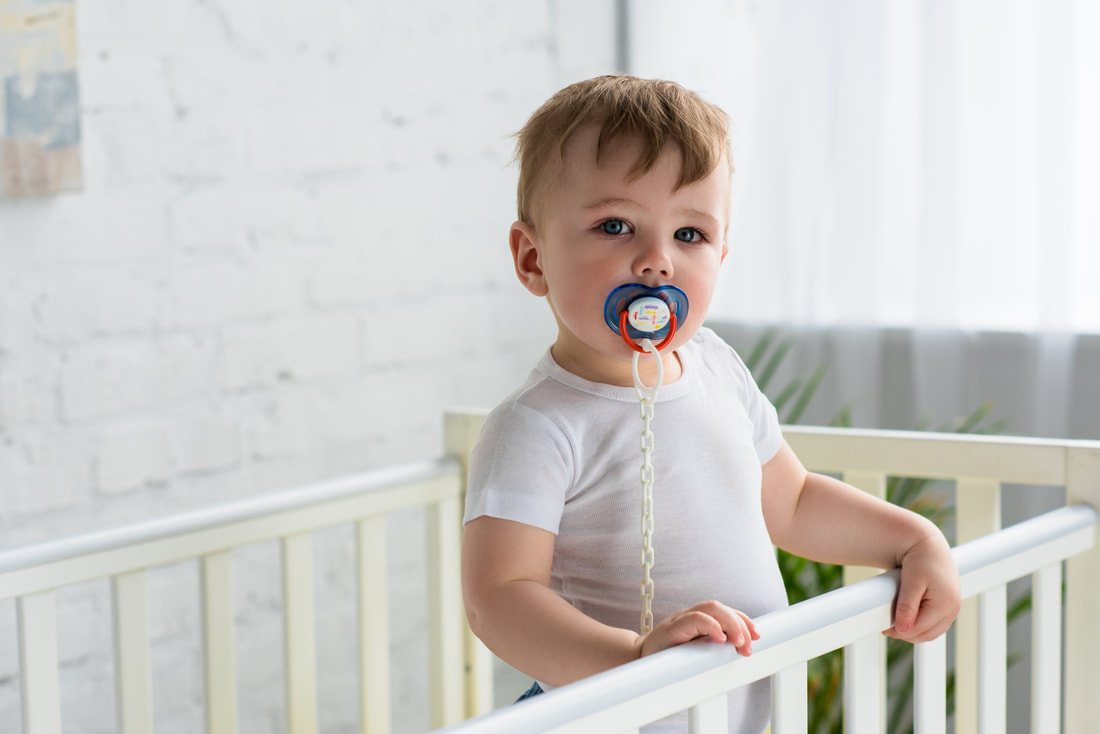
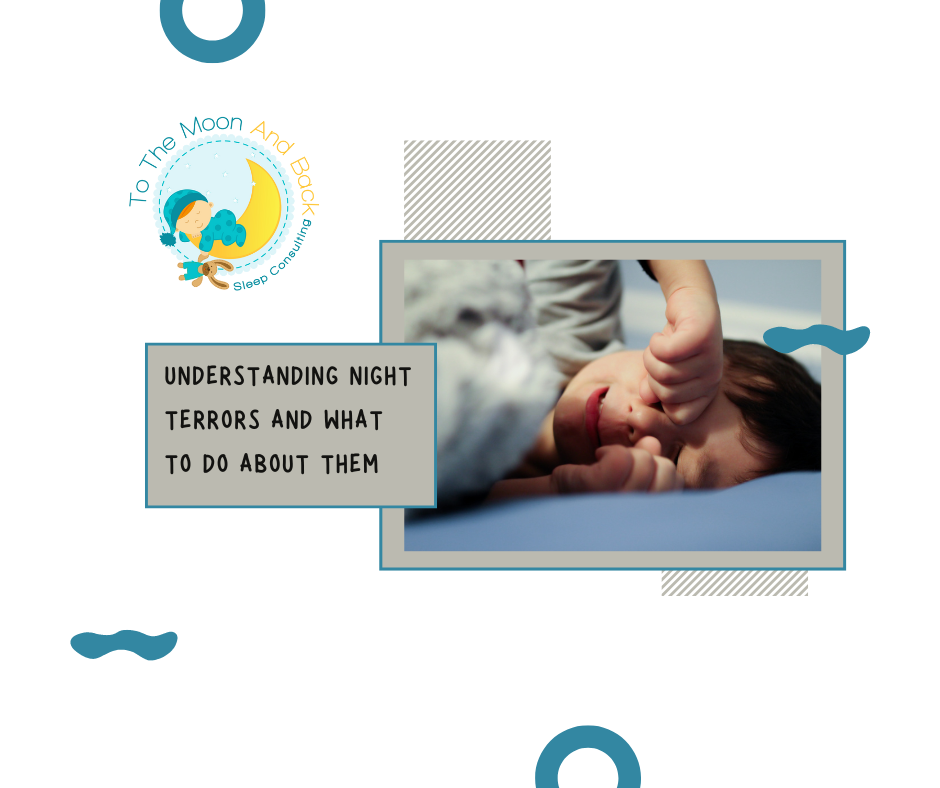

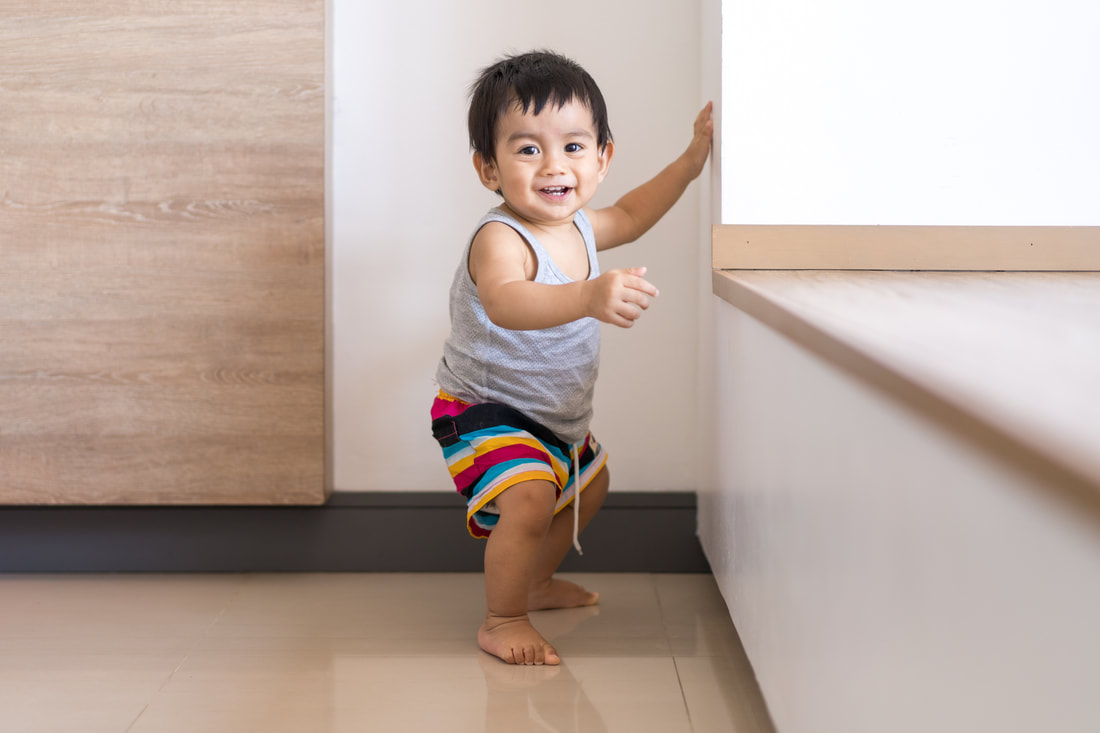



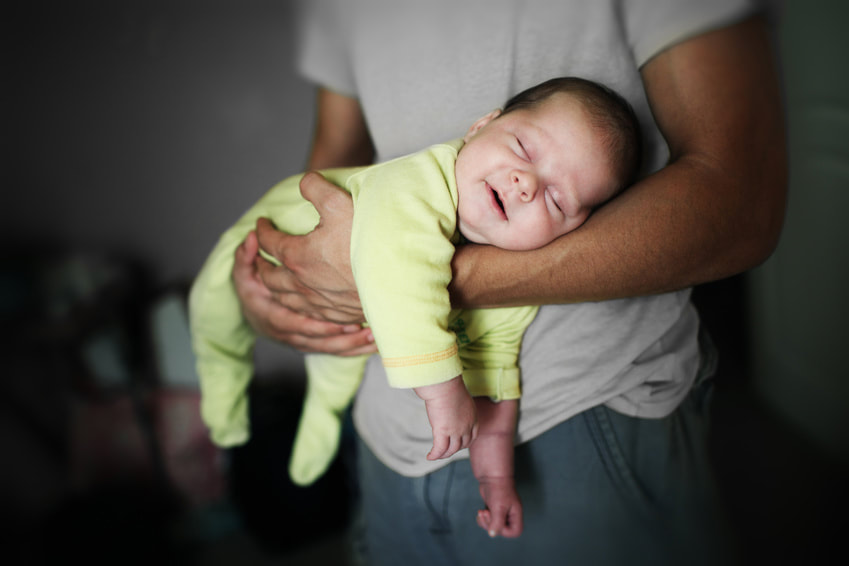

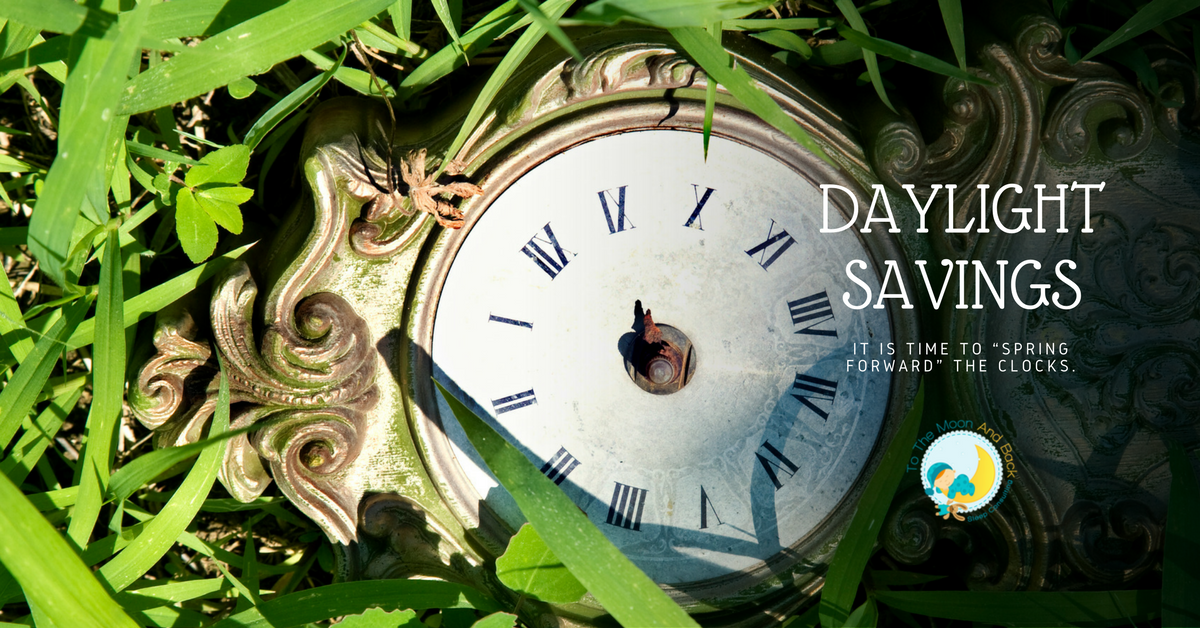


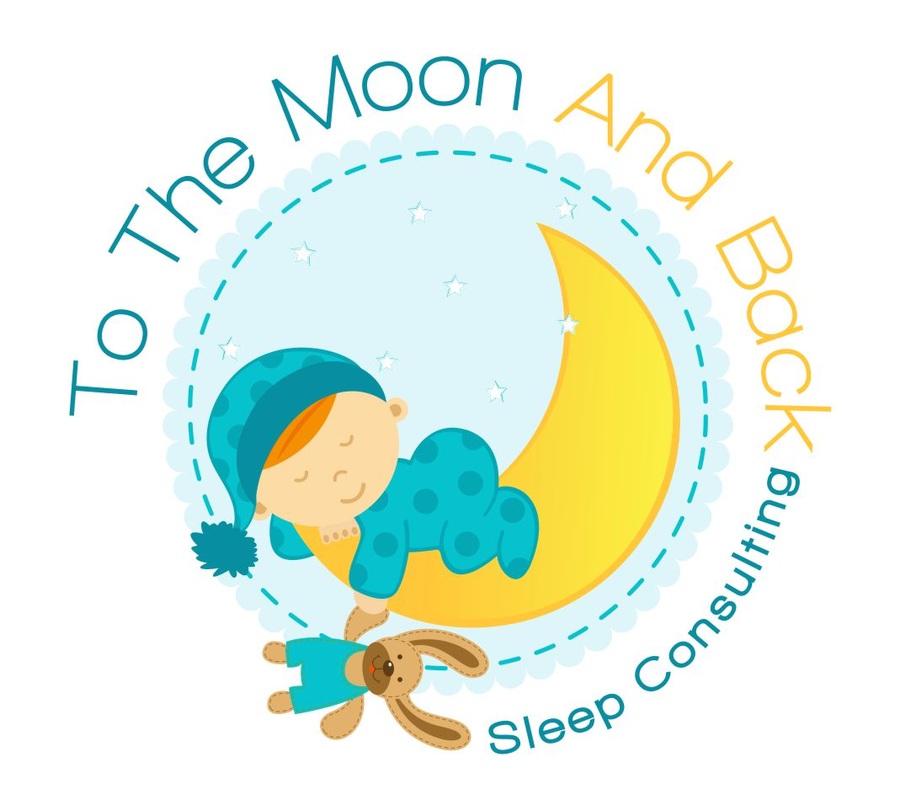




 RSS Feed
RSS Feed

